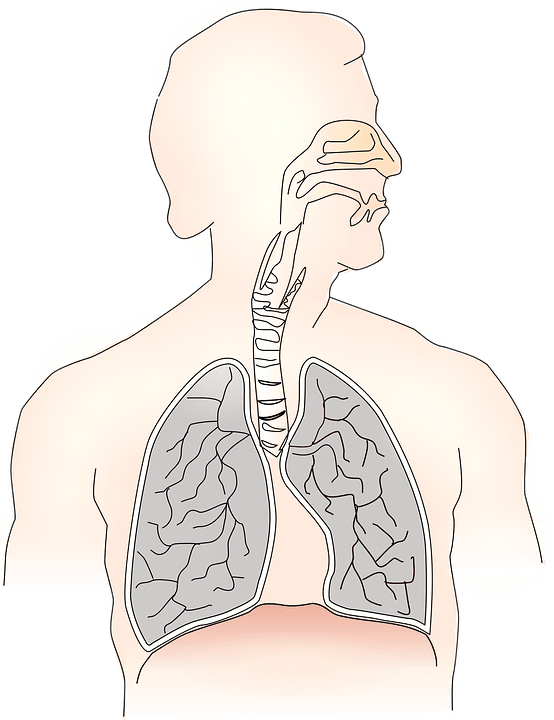Respiratory Stimulants: Types and Uses
Respiratory stimulants are a subset of drugs referred to as analeptics. They are shown to mildly increase alertness, lessen the fatigue and decrease drowsiness. However, higher doses may cause nervousness and precipitate convulsions.
Thus, respiratory stimulants have a narrow margin of safety for clinical use. They require therapeutic dose monitoring. They are primarily used to stimulate respiration, in post-anesthesia states, coma or respiratory muscle weakness. Thus, their primary use is to treat respiratory depression in emergency cases and post-anesthesia recovery.
The drugs in this category include:
- Doxapram
- Prethcamide
- Pentylenetetrazole
- Nikethamide (It is now withdrawn as it can cause convulsions)
Historically, strychnine which is a spinal poison was used to treat the overdose with sedative-hypnotic drugs. It antagonizes the action of glycine which is itself an inhibitory neurotransmitter.
Bicuculline and Picrotoxin are other drugs. They antagonized the action of GABA, which is another inhibitory neurotransmitter. Thus, inhibition of an inhibitory transmitter leads to excitation.
All three drugs today have no medical significance. They are relevant from a toxicologic point of view.
(For clarity; Inhibitory neurotransmitters: Glycine, GABA
Excitatory neurotransmitters: Glutamate, Serotonin, Dopamine, Acetylcholine, etc)
The therapeutic indications of these respiratory stimulants include:
- Following hypnotic poisoning (for e.g. Barbiturate overdose) till the time mechanical ventilation is made available.
- Suffocation (due to poisonous gas inhalation) or drowning, both of which signify acute respiratory insufficiency.
- Apnea in premature infants (for eg. due to underdevelopment of respiratory center in the medulla oblongata)
- To aid in spontaneous ventilation after general anesthesia.
Mechanism of Action: Respiratory Stimulants
Since these groups of drugs act on the Central Nervous System, they have complex interactions with receptor-channels and neurotransmitters.
Doxapram is a potassium channel blocker in the carotid and aortic chemoreceptors. This leads to increased positivity inside the cell, calcium entry and depolarization. Thus, they lead to afferent impulses, which stimulate respiration. Side effects are comparatively rare.
Caffeine is an adenosine antagonist. Adenosine causes CNS depression through various pathways, leading to sleepiness and fatigue. Caffeine, being an antagonist reverses these effects. The side effects include insomnia, diuresis, tinnitus (ringing in the ears), and psychological dependence.
Drugs like buspirone and mosapride are serotonin agonists. Serotonin is a neurotransmitter which leads to wakefulness and produces an analeptic response.
Another class of drugs called AMPAkines (amino-hydroxy-methyl-aspartate) causes stimulation of neurons in the ventral group of the Respiratory Centre. Prolonged action potentials in this area are responsible for an increase in the rate of respiration. The endogenous neurotransmitter Glutamate acts through these AMPA receptors.
Therapeutic Uses of drugs:
Doxapram- It is a selective respiratory center stimulant with little convulsant potential. It is a short-acting drug and is excreted rapidly. It promotes the excitation of neurons in the central nervous system. Respiration is stimulated through activation and discharge of aortic and carotid chemoreceptors. Nausea, coughing, and restlessness are side effects.
There is a marked rise in the blood pressure of hypotensive patients. Apnoeic premature infants who do not respond to theophylline, do respond to doxapram given through continuous IV infusion.
Caffeine- It is a potent analeptic as well. Therapeutically, it is used for respiratory stimulation in cases of apnoea and bronchopulmonary dysplasia in infants. It does not treat it. However, the occurrence is reduced.
Theophylline, another closely related drug to caffeine is not used in infants because of its toxicity and adverse drug profile.
Respiratory Stimulants: Existing Scenario
Respiratory stimulants are rarely used nowadays. Many short-acting anesthetic agents, including thiopentone sodium, sevoflurane, and desflurane, etc preclude the need for a respiratory stimulant.
Barbiturate overdoses today, are treated more efficiently with alkaline diuresis and other supportive measures, thus obviating the need for doxapram.
In infants, recent studies have shown that doxapram may increase cerebral oxygen demand, leading to delayed milestones. Hence it is cautiously and sparingly used.


Pingback: Respiratory Stimulants: Types and Uses - The Pharma E-Learning
You completed some good points there. I did a search on the theme and found most people will have the same opinion with your blog.